- 1. Why You Need to Break in Hiking Boots
- 2. How to Break in Your Hiking Boots
- 2.1. 1. Wear boots inside.
- 2.2. 2. Wear boots outside.
- 2.3. 3. Wear a heavy pack on the trail.
- 3. Tips for Breaking in Hiking Boots
- 4. How NOT to Break in Your Hiking Boots
- 4.1. What not to do:
- 4.2. What to do:
- 5. Listen to Your Feet
- 6. Take Care of Your Hiking Boots
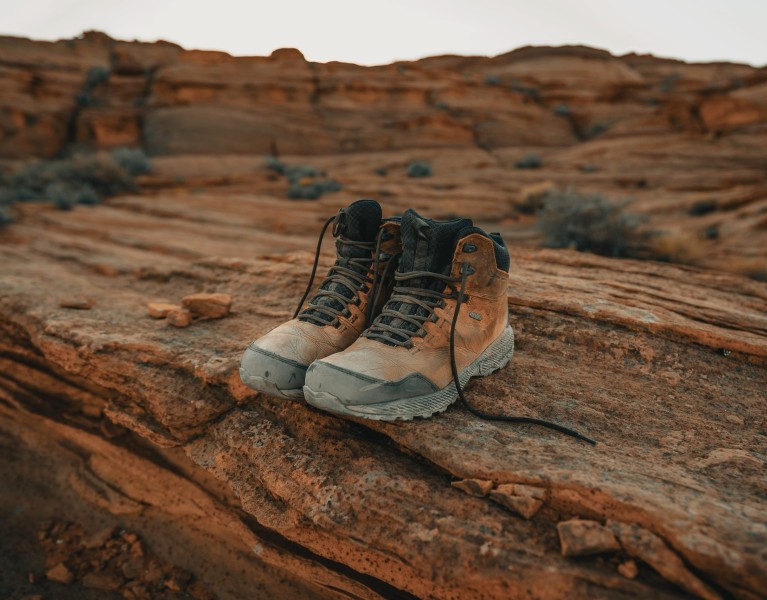
How to Break in Hiking Boots: The Ultimate Guide
Table of Contents [Show]
There are few things in life that compare to the feeling one gets while exploring the great outdoors. From mountainous peaks to lush, green forests, there is something magical and invigorating about taking a hike through nature. One of the most important pieces of equipment needed for your hike is a pair of sturdy, high-quality, hiking boots. Nothing can ruin your experience more than strapping on your new boots without properly breaking them in.
New hiking boots need special attention when it comes to breaking them in and ensuring they’re comfortable enough for extended use. If you want to avoid sore, achy, and blistery feet before your next big adventure, read on for everything you need to know about breaking in your new hiking boots.
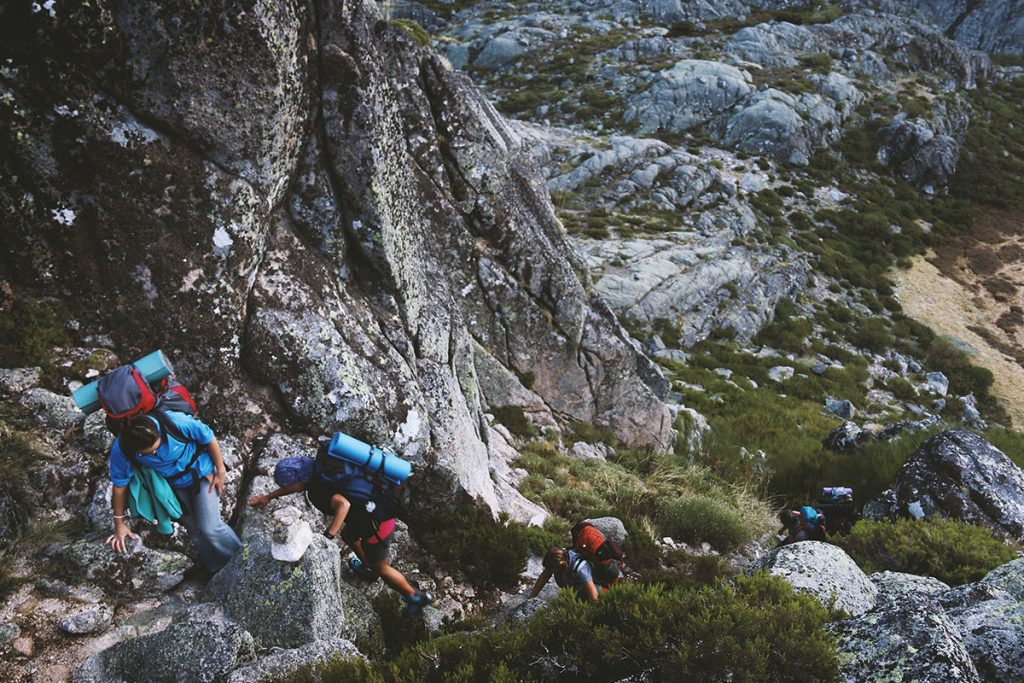
Why You Need to Break in Hiking Boots
Hiking boots are designed to be sturdy, supportive, and durable. Because they need to protect your feet from hot or cold weather, rough terrain, small rocks and other debris, hiking boots are often stiffer than athletic shoes. They aren’t always comfortable right away. The good news is that you can break in your hiking boots so they’re more comfortable and fit your foot shape better.
Breaking in hiking boots is considered a necessary step before hitting the trails. It’s especially important if you’re breaking in a new pair or switching brands. They’re also likely to be uncomfortably tight since manufacturers size them to be a bit smaller than your usual size to account for stretching with use. Breaking in hiking boots helps make them more comfortable, reduces blisters, and allows your feet to expand inside of them.
How to Break in Your Hiking Boots
The hiking boots that are manufactured today are designed to be higher-performing with everything from impact-absorbing footbeds and waterproof linings to breathable, more durable materials both inside and out. But new boots are new boots, and regardless of how well-made, you still need to break them in.
There's no one-size-fits-all answer to breaking in new hiking boots, as the best way to do so will vary depending on the materials and construction of the boots. Different boots have different break-in times. Light hikers may feel perfect after a short walk, while heavier leather models may require weeks to fully break in. Leather needs time to soften up so your boots and feet can conform to one another for a more comfortable fit.
But before you even think about wearing your new boots on a long hike, there are a few things you can do to make them more comfortable and trail-ready:
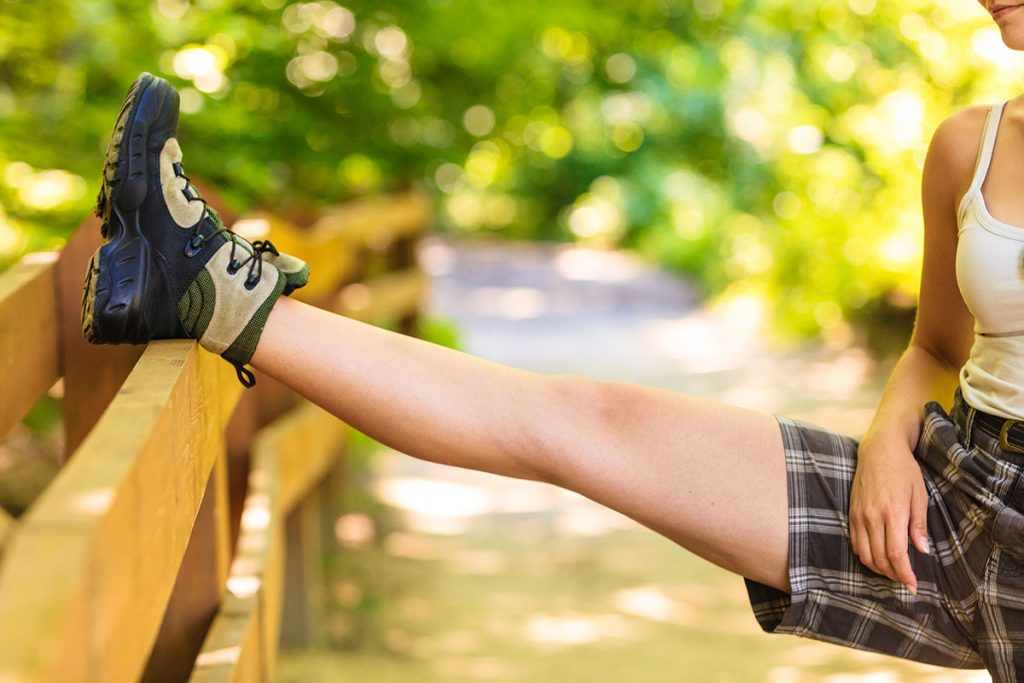
1. Wear boots inside.
The best way to break in your new boots is to wear them around the house for a while. Strap them on, and take a hike indoors. Sit with them on, stand with them on, and allow your feet to adjust. If you have stairs or steps, hike up and down them a few times, feeling for any discomfort. You can even take the steps with just your toes touching the edges, which could help prevent future blisters.
2. Wear boots outside.
You can’t take your brand-new hiking boots on a long hike and expect them to be comfortable. Start with something simple like a walk in the park or around your neighborhood. Then move to unsealed surfaces like fields and footpaths, and intentionally hike across uneven terrain. Keep increasing your distance gradually. As your boots become more comfortable, you can move on to longer, more challenging hikes.
3. Wear a heavy pack on the trail.
Strap on a backpack filled with heavy materials, and walk around in your new boots. Once you feel more comfortable, take your boots off-pavement. If necessary, increase both the weight you are carrying and the mileage to improve the break-in process.
Tips for Breaking in Hiking Boots
If you take the time to properly break in a new pair of hiking boots, you will enjoy more comfortable miles hiking the trails. Here are a few tips to follow when breaking into your boots:
- Socks – make sure to put on the socks you intend to wear while hiking. You can also wear two or more pairs while breaking in your boots. This will help to stretch them and your feet will feel more comfortable when you are wearing fewer pairs while hiking. Experiment with a few different pairs of socks, as well, to see what works best.
- Laces – if you experience any initial discomfort while breaking in your boots, ensure they’re laced correctly. You want them to be laced snugly but not too tight. Also, make sure the tongue is adjusted properly.
- Manufacturer’s Instructions – an instruction booklet will come with your new hiking boots. Read it. Even if there aren’t any break-in tips, you will find information about proper care and use of your boots.
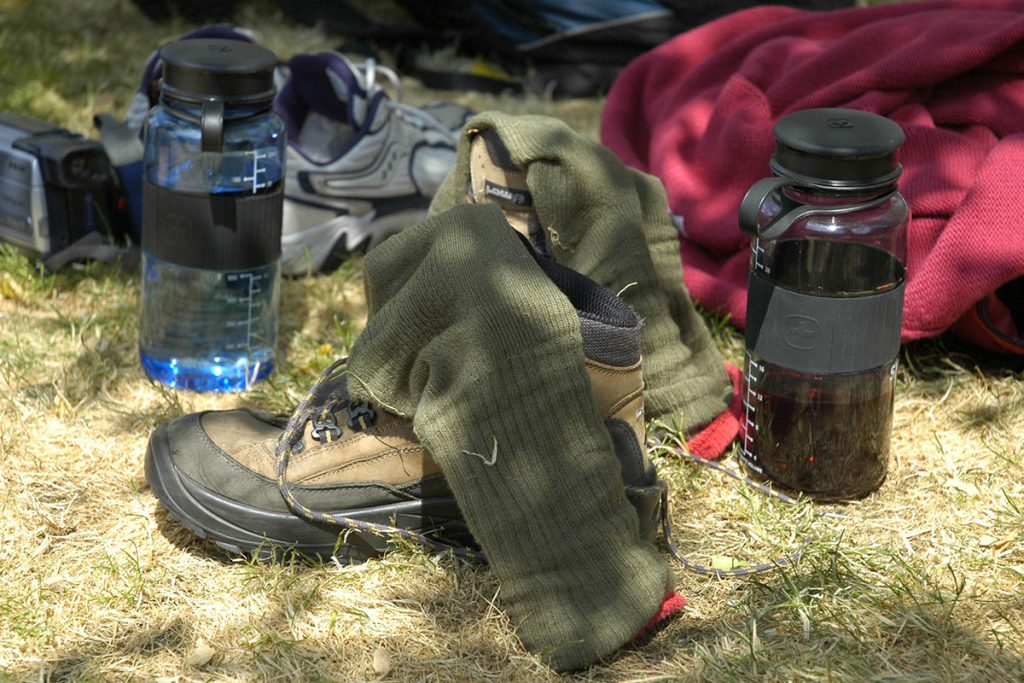
How NOT to Break in Your Hiking Boots
If you just shelled out some good money for a new pair of leather hiking boots, and you can’t wait to take them out for a spin on the trails, you will still need to break them in properly to avoid any pain and discomfort. If you are in a hurry to get your new boots broken in, there are some things you can try, but there are also some things not to do.
What not to do:
- Water Immersion – even though soaking leather in water can make it more pliable, it can actually shrink your boots and do just the opposite of what you are trying to accomplish. It can also warp and damage parts of the boot, such as the soles.
- Heat Exposure – heat can also help make the leather softer but it can also damage it. Leather fibers can crack and dry out from too much heat exposure, compromising the quality and structure of the boots.
What to do:
- Shoe Stretcher – a tried and true method for breaking in leather hiking boots is with an old-fashioned shoe stretcher. A shoe stretcher is usually made from either maple or birch wood and has a few holes along the top where you can put pegs, hooks, or other small accessories to stretch different parts of the boot. You can find shoe stretchers at many shoe repair shops and oftentimes they’re also sold online.
- Break-in Creams – what’s nice about break-in creams is that they’re an easy and convenient way to help break in leather hiking boots. These leather conditioners are often made from natural ingredients and can help to reduce friction and break down any fibers or materials in the footwear that may be causing chafing or blisters. Simply apply the conditioner to your hiking boots and let them sit for a few hours or overnight.
Listen to Your Feet
Good-fitting and great-feeling hiking boots are essential to keeping your feet happy and pain-free on the trail. Listen to your feet, and be vigilant about any pain points. If your boots are pinching or you experience a hot spot after breaking them in, you can try to lace them a new way, use another foot bed or wear different socks. But if you have a significant fit issue, you might need a different pair of boots. No matter how hard you try, the break-in process won’t turn a poor fit into a good one.
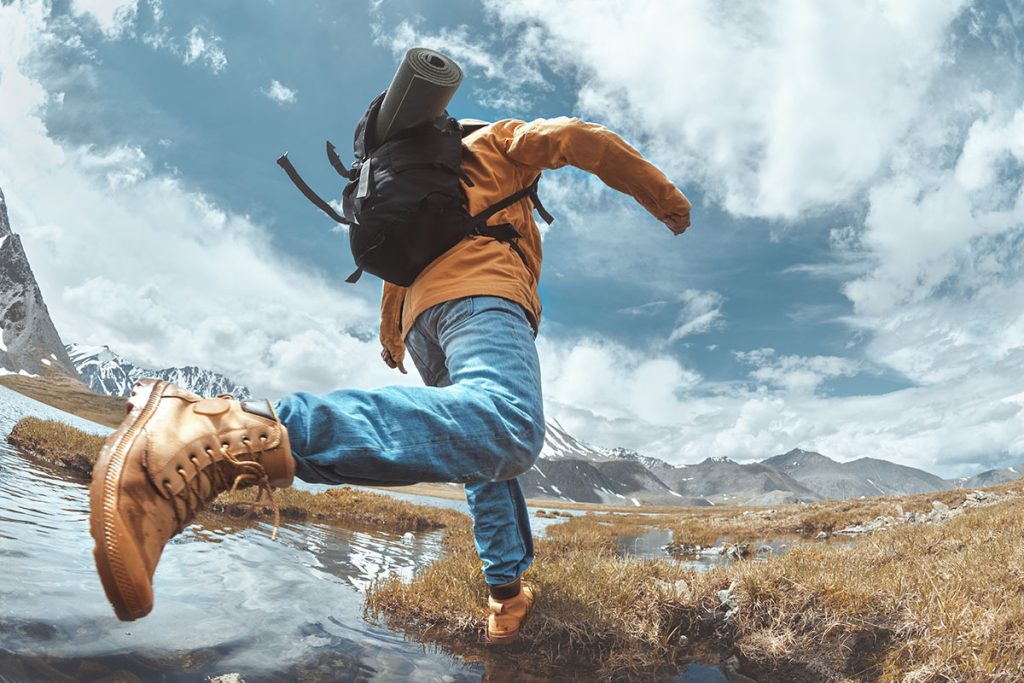
Take Care of Your Hiking Boots
Once you have broken in your new hiking boots, you need to properly take care of them. You should always wash them after any long hikes to remove caked-on dirt or mud. Wash them in cold water with mild soap, air dry them, condition them with a special boot oil, and store them in a cool dry place when not in use. Break in and take care of your new hiking boots so they can take care of your feet. Who knows, your new boots just might make your outdoor adventures a little more enjoyable and your hikes last a little longer.
Featured image by: Clay BanksHire.


